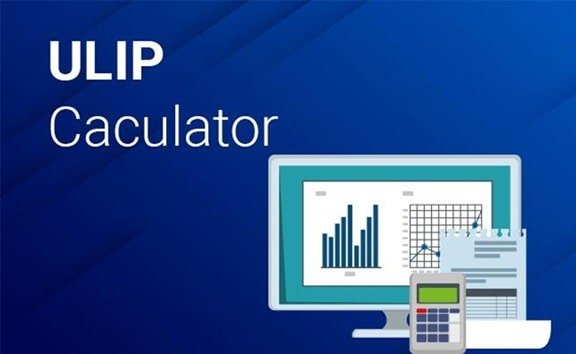A Unit Linked Insurance Plan (ULIP) is a unique insurance product that combines market-linked investments with life insurance. With the help of such a plan, you not only secure your family’s future financially but also open new doors of fund growth for yourself. Understanding how to manage these plans effectively is key to maximizing their benefits. At the same time, it is important that you understand the potential outcomes of the investment component, as well as those of life insurance. In this regard, a ULIP calculator is an effective tool. But before delving into that, let’s start with the basic functioning of ULIPs.
What is a ULIP and Why Consider It?

A ULIP is a two-in-one insurance product. A portion of the premium you pay goes towards providing life insurance coverage that financially protects your loved ones in the event of your demise (if you are the life assured) during the policy tenure. The remaining amount is invested in various funds, such as equity, debt, or a mix of both, based on your choice.
Key benefits of a ULIP include:
- Dual Advantage: It offers both life insurance and investment returns in a single plan.
- Flexibility: You can switch between different funds (e.g., from equity to debt) depending on market conditions and your risk appetite.
- Goal-Oriented Savings: ULIPs can help you build wealth for long-term objectives such as a child’s education, buying a home, or retirement planning.
- Tax Benefits: ULIPs offer tax deductions on premium payments (for the insurance aspect) under Section 80C (only under the old tax regime) and tax-free maturity proceeds under Section 10(10D), subject to certain conditions of the Income Tax Act, 1961.
Tax benefits are subject to changes in the tax laws, and you are advised to consult your tax advisor.
What is a ULIP Calculator and Why is it Important?
A ULIP plan calculator is an online tool that helps you estimate the future value of your investment. By entering a few key details about your investment plan, the calculator provides a projection of the maturity amount you might receive.
This tool is important for several reasons:
- Financial Planning: It allows you to see how your investment might grow over time, helping you set realistic financial goals.
- Comparison: You can compare different ULIP plans and investment scenarios to see which one best aligns with your objectives.
- Risk Assessment: By adjusting the expected rate of return, you can understand how market volatility might affect your investment.
How to Use a ULIP Calculator: A Step-by-Step Guide
Using a ULIP plan calculator is straightforward. Here is a simple guide to get you started:
- Enter Your Investment Amount: Start by inputting the premium you plan to invest. You can choose to enter this as a lump sum (single premium) or a periodic payment (e.g., monthly or yearly).
- Select the Investment Frequency: If you choose a regular investment, specify how often you will pay the premium (e.g., annually).
- Choose Your Policy Tenure: Enter the duration for which you want to stay invested. ULIPs have a mandatory lock-in period of five years.
- Set the Expected Rate of Return: Input the rate of return you anticipate from your investments. Most calculators provide a standard and an optimistic scenario (e.g., 4% and 8%) to show a range of possible outcomes. These returns are purely illustrative, do not reflect actual returns, and are not guaranteed as they are linked to market performance.
- Calculate the Returns: Once all the details are entered, the calculator will process the information and display the estimated maturity value of your ULIP plan.
Understanding the Inputs of a ULIP Calculator
To get the most accurate estimate from a ULIP calculator, it’s helpful to understand the components you are adjusting.
- Investment Amount & Frequency: This is the premium you commit to the plan. A higher or more frequent investment can lead to a larger fund value over time.
- Policy Tenure: This is your investment horizon. The longer you stay invested, the more time your money has to grow, benefiting from compounding.
- Fund Allocation: Some advanced calculators allow you to specify how you want to allocate your investment across different fund types (equity, debt, balanced). This allocation directly influences your risk exposure and potential returns.
- Expected Rate of Return: This is an assumption about the performance of the funds you have chosen. Equity funds generally offer higher returns but greater risk, while debt funds offer lower returns but lower risk.
How ULIP Calculators Support Smarter Investing
A ULIP plan calculator is more than just a tool for projecting numbers; it is a strategic aid for your financial journey.
- Goal Alignment: The calculator helps you determine the investment amount needed to reach a specific financial goal. For instance, if you need a certain amount for your child’s college education in 15 years, the calculator can show you the yearly investment required.
- Risk and Return Balancing: By experimenting with different fund allocations and expected returns, you can find a balance that aligns with your risk tolerance. If you are risk-averse, you can see the projected outcome of investing in debt funds. If you are willing to take more risk for higher returns, you can model an equity-focused strategy.
- Informed Decision-Making: The projections give you a clearer picture of what to expect from your ULIP plan. This allows you to make adjustments to your strategy, such as increasing your premium or changing your fund allocation, to stay on track with your goals.
Maximizing Your ULIP Returns
ULIP is a long-term commitment. It starts with a 5-year lock-in period, and staying for long term gives more opportunities. Considering this, using a ULIP calculator is the first step toward making that commitment a successful one. It provides clarity and direction, turning your financial goals from abstract dreams into achievable targets. By understanding how your money can grow, you can build a disciplined investment habit and create a secure financial future for yourself and your family.
Anantha Nageswaran is the chief editor and writer at TheBusinessBlaze.com. He specialises in business, finance, insurance, loan investment topics. With a strong background in business-finance and a passion for demystifying complex concepts, Anantha brings a unique perspective to his writing.


